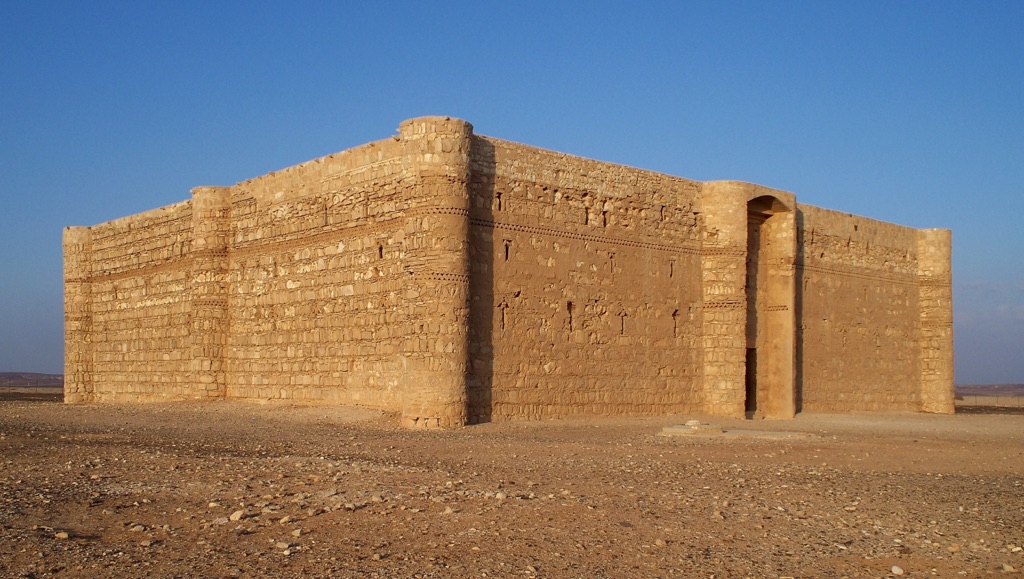Qasr Al-Kharranah is a captivating historical site located in the eastern part of Jordan. This desert castle, one of the earliest examples of Islamic architecture, stands as a testament to the region’s rich history. It is a two-story structure with a nearly square floor plan and features numerous rooms surrounding a central courtyard. Despite its…
Umayyad Caliphate
The Umayyad Caliphate, established in 661 AD after the tumultuous period of civil war that followed the death of Prophet Muhammad, marked a significant era in Islamic and world history. It was the second of the four major caliphates established after the death of Muhammad, succeeding the Rashidun Caliphate. The Umayyad dynasty, originating from the Meccan tribe of Quraysh, to which Prophet Muhammad also belonged, shifted the Islamic capital from Medina to Damascus. This move not only represented a political shift but also laid the foundation for the Umayyad’s expansive empire, which would stretch from the Iberian Peninsula in the west to the Indus River in the east.
Under the Umayyad rule, the Islamic empire witnessed unprecedented territorial expansion. Key military campaigns during this period included the conquests of North Africa, the invasion of the Visigothic Kingdom in the Iberian Peninsula, and significant advances into the Indian subcontinent. These conquests not only extended the boundaries of the empire but also facilitated the spread of Islam and the Arabic language, deeply influencing the social and cultural landscapes of the conquered regions.
The Umayyad Caliphate was characterized by remarkable achievements in various fields, including architecture, science, and administration. The construction of the Great Mosque of Damascus and the expansion of the Al-Aqsa Mosque in Jerusalem are testament to the architectural and cultural legacy of the Umayyads. Furthermore, the establishment of Arabic as the official language of administration and the minting of the first Islamic currency demonstrated the Caliphate’s efforts to unify and manage its vast territories.
Religion played a central role in the Umayyad Caliphate, with Islam being the state religion. However, the Umayyads were known for their pragmatic approach to governance, allowing Christians, Jews, and other religious communities within their empire considerable autonomy in exchange for a special tax. This policy not only ensured the smooth integration of diverse populations but also facilitated the peaceful coexistence of multiple religions and cultures under the Umayyad rule.
Social and daily life in the Umayyad Caliphate varied significantly across its vast territories, influenced by local traditions and the pre-Islamic cultures of the conquered regions. In the urban centers, such as Damascus, a vibrant cultural life emerged, blending Islamic traditions with local customs. The Umayyads also patronized the arts and sciences, contributing to the Islamic Golden Age that would reach its zenith in the centuries that followed.
The Umayyad dynasty saw over a dozen caliphs, with Muawiya I being the first. His establishment of a hereditary monarchy marked a departure from the elective system of the Rashidun Caliphate, laying the groundwork for the dynastic rule that would characterize subsequent Islamic empires. The last Umayyad caliph, Marwan II, was overthrown in 750 AD by the Abbasids, who claimed descent from Muhammad’s uncle, Abbas ibn Abd al-Muttalib, marking the end of the Umayyad reign in the East.
However, the Umayyad legacy did not end with the Abbasid takeover. A surviving member of the Umayyad dynasty fled to the Iberian Peninsula, where he established the Emirate of Córdoba, which later became the Caliphate of Córdoba. This marked the continuation of Umayyad rule in al-Andalus (modern-day Spain and Portugal) until the 11th century, preserving the Umayyad influence in Europe.
The Umayyad Caliphate’s contributions to the Islamic civilization and world history are immense. From their architectural marvels and administrative innovations to their role in the spread of Islam and the Arabic language, the Umayyads played a pivotal role in shaping the medieval world. Despite their eventual fall, the legacy of the Umayyad Caliphate continues to influence the Islamic and global cultural landscapes.

